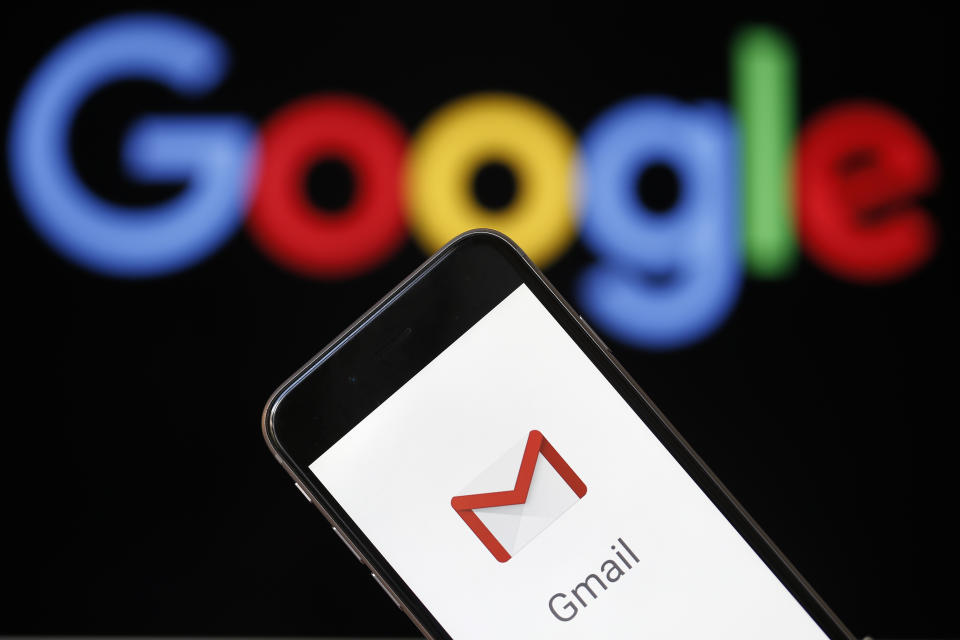Gmail shows the true potential of a Google checking account
Google (GOOG, GOOGL) is getting into banking.
According to a report from the Wall Street Journal the company says it’s going to be the next tech company to enter financial services with a checking account.
The project has the code name “Cache,” and Google will offer accounts via traditional banks like Citigroup (C) and a Stanford credit union.
For Google it’s probably a data play — that’s the takeaway the Journal offers and it makes sense from what we know about Google. And with good reason. A checking account offers tons of information on a person’s spending, though perhaps not as much as an email account full of online purchase receipts (which Google reads and keeps for you). This is especially true if a person chooses to make purchases with a credit card, not a debit card.
The privacy policies of most big banks (Chase, Wells, Citi) all talk about how they collect and share data, so the uses for advertising are well-established.
Google has done this before
It’s not hard to picture how Google could take market share in the checking account market. In 2004, when Google entered the email game, it launched aggressively against Yahoo (Yahoo Finance’s parent company) and Hotmail, delivering an experience that ended up with Gmail’s dominance.
Google offered far more storage than its competitors — a whole gigabyte — dwarfing Yahoo’s 100 MB and Hotmail’s 250 MB, and the interface offered more features and a smoother experience.
Checking accounts have long been sources of frustration for customers, with fees that to customers, at least, seem unreasonable or preventable, from minimum balance fees to overdraft fees. If Google saw the investment worthy, it could differentiate itself from a sea of more or less commodified accounts by simply removing pain points. A free or more affordable price, something simpler and elegant could make the difference even if Google didn’t add features, which it could.

Take what Google did with its little-known phone offering, Project Fi. Compared to the customer service, billing, and signup platforms and processes of big phone companies, Google showed what the telecom world could be if it adopted a tech mindset for user experience, which even let users be billed for the exact number of gigabytes, down to the decimal, so no unused data is charged. Though users love the service, the limited selection of phones and lack of iPhone compatibility prevented the service from its full disruptive potential.
Thinking long term
Google probably doesn’t know its endgame without seeing how the service is received. It’s just too early. But if Gmail is anything to go by, this could play out in a different way down the road.
Fifteen years ago, Gmail’s whole gigabyte of storage seemed like it could last forever, especially because the service had a counter that showed that the storage was constantly expanding. This was a time where emails were usually deleted, because competitors had limited storage and people were sending photos and experimenting with larger attachments.
Gmail turned out to be an incredible way for Google to gather user data, to serve them advertising that made Google one of the most valuable companies in the world. But it also ended up giving them a new revenue source many years down the line.
As many people have noticed recently, they are running out of space on Gmail. That’s because it’s been six years since it raised its storage limits and people, who have also uploaded documents and photos to Google Drive, have filled up the space.
But for a small fee, you can have a whole lot more. Today, Google gives everyone 15 GB free. And for $19.99 per year or $1.99 per month, that number goes to 100 GB.
That’s still cheap, and if Google decides, after users have filled up a good portion of that 100 GB, to charge more, what are people going to do, leave?
This anchoring effect is extremely effective, as it makes customers committed and reliant on a platform for many services. Even without being entangled in a web of services from a single company, people have a hard time changing banks. Inertia is strong.
If Google successfully manages to get a foot into retail financial services, it could stand to conquer in other spaces. Only recently, after years of trading fees, the brokerage firms slashed their trading fees to zero and looked ridiculous in the process trying to justify a reason without naming competitors.
It’s easy to imagine Google having done that years ago, if they had been in the space. Now that they might be coming.
-
Ethan Wolff-Mann is a writer at Yahoo Finance focusing on consumer issues, personal finance, retail, airlines, and more. Follow him on Twitter @ewolffmann.
'Snake oil salesmen': Two neurologists respond to the CBD craze
The ski industry is going through a tech transformation
What would a healthy social network look like? Maybe like Strava.
9 tips for not getting spied on while traveling
Large-scale credit card hackers back for the holiday season, ex-FBI investigator says
How to know if your next flight is on a 737 Max
Read the latest financial and business news from Yahoo Finance
Follow Yahoo Finance on Twitter, Facebook, Instagram, Flipboard, LinkedIn, YouTube, and reddit.

 Yahoo Movies
Yahoo Movies 